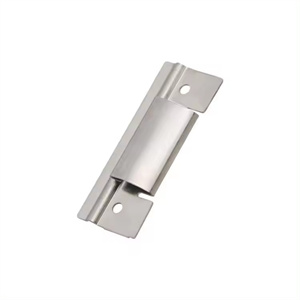Customized stainless steel stamping precision stamping parts
Precision stamping parts are a processing method that uses a stamping die to continuously deform a sheet metal and process it into parts or products of various complex shapes. This processing method has the following significant features:
1. Complex shape and high precision: precision stamping parts can have complex shapes, and the size and shape accuracy are very high. Most of its material thickness is moderate, the punching surface is straight and smooth, and the quality is comparable to that of cutting.
2. Clear contour and small collapse angle: The outline of precision stamping partsis very clear and the collapse angle is small, which is especially suitable for manufacturing some parts with specific shape and precision, such as high-precision gear fine blanking parts, etc., which are difficult to manufacture by other processing processes.
3. Mass production and economy: Precision stamping parts are usually mass-produced mechanical and electrical product parts, including fine blanking parts in mobile phones, computers, automobiles, medical instruments and other products. This production method can achieve a moderately economical production scale, and the raw materials can be directly stamped into finished parts without the need for machining.
4. Wide application: Precision stamping parts are widely used in electronics, automobiles, aerospace, medical equipment and other fields, manufacturing various high-precision parts, such as terminals and electrical connectors, brackets, hangers, temperature probes, surgical equipment, etc.
In addition, compared with ordinary stamping, precision stamping parts also has significant differences in material separation form, cross-sectional quality, convex and concave die clearance, and burr formation. precision stamping parts realizes the separation of materials in the form of deformation, the cross-sectional quality is high, the relationship between the size of the convex and concave die gap and the thickness of the plate is small, and the burr formation is also different.
